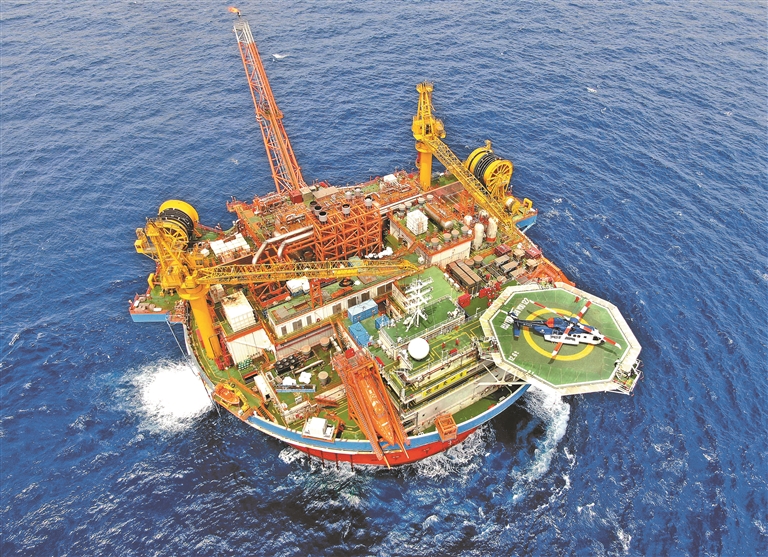On October 11, the «Global Ocean City Competitiveness Index Report (2025)» was officially released in Shenzhen. The report systematically evaluated 60 global ocean cities based on five major dimensions: economic and trade vitality, technological innovation, maritime services, international influence, and urban governance. Combining performance across these five dimensions, Shenzhen ranked 11th overall, placing fourth in technological innovation and seventh in economic and trade vitality.
The report reveals a clear «four-tier» differentiation pattern in global ocean city competitiveness. London, Singapore, and New York occupy the top three positions due to their comprehensive advantages, serving as benchmarks for global ocean development. Cities including Shanghai, Tokyo, Hong Kong, Sydney, Hamburg, Oslo, and Rotterdam rank within the top ten, collectively forming the leading force in the global ocean economy. Cities such as Shenzhen (global 11th), Guangzhou (global 14th), Qingdao (global 16th), and Taipei (global 19th) have entered the second tier, leveraging their strengths in technological innovation and economic and trade vitality, and have become a significant «Chinese force» in global ocean competition.
The report provides an in-depth analysis of the competitive advantages of top global ocean cities. London ranks first globally in four dimensions: technological innovation, maritime services, international influence, and urban governance, with its robust marine legal system and maritime financial services ecosystem constituting its core competitiveness. Singapore secures the top position in economic and trade vitality, with its port efficiency and openness widely recognized.
The report notes that, under the background of the marine power strategy, China has formed three major marine economic circles: the Northern Marine Economic Circle, the Eastern Marine Economic Circle, and the Southern Marine Economic Circle, with Qingdao, Shanghai, and Shenzhen serving as the core leaders of these circles, respectively.
The report finds that Shenzhen is developing rapidly in emerging industry sectors such as marine electronic information and high-end marine equipment manufacturing, demonstrating strong technological innovation capabilities that provide substantial support for the development of the marine economy. Shenzhen’s advantages are evident in deep-sea development and green port and shipping, where it continues to lead in technological breakthroughs and application deployment. Shenzhen is opening new pathways in the marine economy through «technology integration + ecosystem construction.» Breakthroughs continue in the marine new energy sector, with the sea trial efficiency of a 100-kilowatt wave energy power generation system exceeding the industry average by 15%. This, combined with the flare gas recovery technology of Asia’s first cylindrical floating production storage and offloading unit (FPSO) «Sea Anemone One,» forms a «green power generation + low-carbon energy use» closed loop. Building on this, the Shenzhen International Ocean Innovation Research Institute, in collaboration with the China Ocean Mineral Resources R&D Association, is establishing «seven centers and two platforms» to promote the cross-border integration of technologies such as deep-sea mining with wave energy power supply, and underwater robotics with digital twins, constructing a full-industry-chain innovation ecosystem covering resource exploration, equipment development, and ecological monitoring.
The report proposes a «four-dimensional enhancement path» for Chinese ocean cities: building an open economic ecosystem, creating a hub for technological innovation, deepening participation in global governance, and innovating green and low-carbon models. This systematically addresses the core question of how to enhance global ocean competitiveness.
Regarding Shenzhen’s future trends, the report suggests that Shenzhen will anchor its strategic goal of becoming a «Global Ocean Central City,» focusing on advancing three key directions: First, deepening the integration of «deep-sea equipment—new energy—smart shipping» technologies, promoting the integration of deep-sea mining robots with renewable energy power supply systems, and linking LNG bunkering with intelligent scheduling algorithms. Second, establishing a marine resource trading center to explore the market-based allocation of elements such as deep-sea mineral development rights and marine carbon sinks, creating a hub for blue finance innovation. Third, through international cooperation projects like the «Deep Blue Dream 2035» global scientific research expedition, transforming technological achievements such as intelligent mining standards and green bunkering specifications into influence in international rule-making, ultimately building a new benchmark for ocean civilization that exemplifies both industrial leadership and ecological demonstration.



